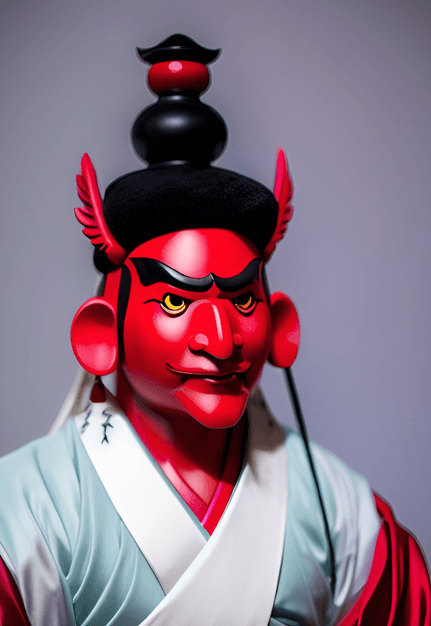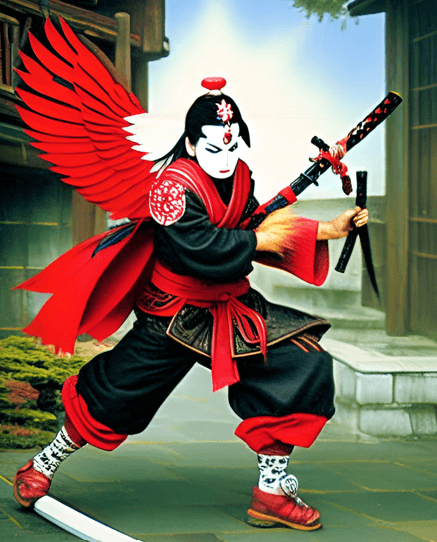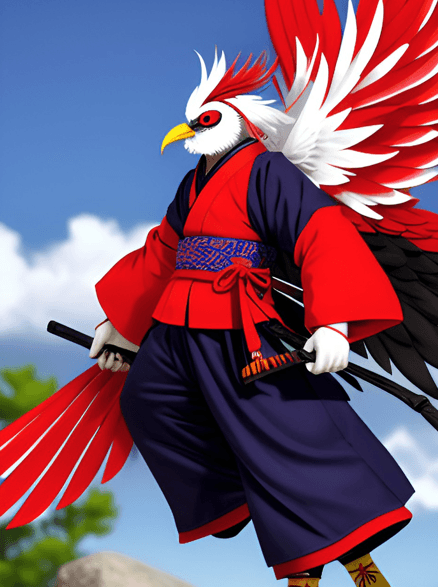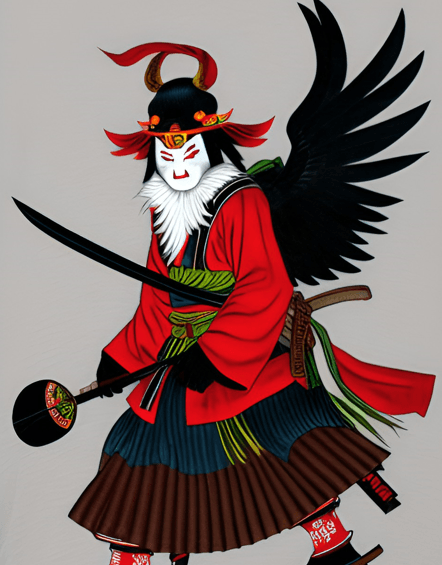Tengu is a mythical creature from Japanese folklore that has captivated the imagination of people for centuries. This bird-like yokai has a long and diverse history, unique characteristics, and an interesting appearance that sets it apart from other creatures from Japanese Mythology.
In this article, we will explore its origins and history, appearance, behaviour and characteristics, as well as modern popular culture references, and other similar mythical beings from Japanese folklore and around the world.
MORE LIKE THIS: Bakeneko – Japanese Folklore’s Crafty Cat
Origins and History of Tengu

Tengu is a Japanese yokai, which means a supernatural creature or monster. The word Tengu is believed by many to have derived from a Chinese mythical being called Tiangou, a heavenly dog that eats the moon or sun during an eclipse.
Tengu is believed to have originated in Japanese folklore during the Heian period (794-1185). At the time, Tengu was depicted as a dog-headed creature with supernatural powers.
Over time, Tengu evolved into a more bird-like creature with human features. It was believed that Tengu was a guardian of the mountains and forests and had the ability to control the elements. Tengu was also known for its mischievous nature, and it was believed that it enjoyed playing tricks on humans.
There is a strong association with Tengu and the yamabushi, mountain monks that are found in the major peaks of Japan. The yamabushi are practitioners of a form of Buddhism called Shugendo, which emphasizes spiritual and physical training in the mountains. Tengu is seen as a teacher or mentor to the yamabushi, imparting wisdom and martial arts skills to those who seek enlightenment.
Tengu’s association with the yamabushi highlights the creature’s role as a guardian of the mountains and forests. It also demonstrates how Tengu has been incorporated into Japanese religious practices and traditions over the centuries.
Appearance of Tengu

Tengu has both bird and human-like characteristics. In modern times it is most commonly depicted with a human body and the head of a bird, though the opposite is true in history, with Tengu being shown as a bird with a human head.
It has a red face, a long nose, and sharp teeth. Tengu is often depicted wearing traditional samurai clothing and a large, feathered hat called a kanmuri. Tengu also have wings, which enable it to fly, and more often than not are shown wielding a sword.
Due to the aforementioned association of Tengu with the yamabushi, the creature is sometimes shown wearing yamabushi robes, a tokin hat, and a buddhist monk staff known as the shakujō.
Behaviour and Characteristics of Tengu

Tengu is known for its mischievous and sometimes malevolent behaviour. It was believed that the mythical creature enjoyed playing tricks on humans, and it had the ability to transform humans into animals. The Tengu are also masters of martial arts and magic, and it is said that they can manipulate the elements to their will.
Despite its mischievous nature, Tengu is also a guardian of the mountains and forests, and it is said that it would punish those who harmed the environment or disrespected nature.
Similar Mythical Beings from Japanese Mythology and Around the World

Tengu is just one of many mythical creatures from Japanese folklore. There are a number of other yokai that share similarities with Tengu, including the Kappa, a water spirit that has a turtle-like shell on its back and a dish-shaped depression on its head; the Kitsune, a fox spirit that can shapeshift and has magical abilities; and the Oni, a demon-like creature with horns and sharp claws. Like Tengu, these creatures are often depicted as having supernatural powers and a connection to nature.
Mythical creatures can also be found in many other cultures around the world. In some cases, they share similar characteristics with Tengu. For example, in Greek mythology, there are the Harpies, which are bird-like creatures with the faces of women and sharp talons.
Norse mythology has a similar creature in the form of the Valkyries, female warriors who rode winged horses and carried the souls of fallen warriors to Valhalla. Like Tengu, the Valkyries are associated with the natural world and were believed to have control over the winds.
Tengu in Modern Times

Tengu has had a significant impact on modern popular culture in Japan and around the world. In Japanese anime and manga, Tengu is often portrayed as a powerful and mysterious creature with supernatural powers. Tengu is also a character in video games, including the popular fighting game series Street Fighter.
Tengu has also inspired a range of merchandise, such as T-shirts, keychains, and plush toys. Tengu’s popularity has also spread to the United States, where it has been featured in films, television shows, and video games.
Get in Touch
Did you enjoy reading about Tengu? Do you have any extra information that you feel should be included in this article? If so, please get in touch by using the comment section below!
If you enjoyed reading about Tengu, you might also like our article about the Oni, fierce demons from Japanese folklore.
For enquiries, contact me at richard@mythologyplanet.com
To check out a cool video about Tengu, watch the YouTube Video below by See U in History / Mythology.
